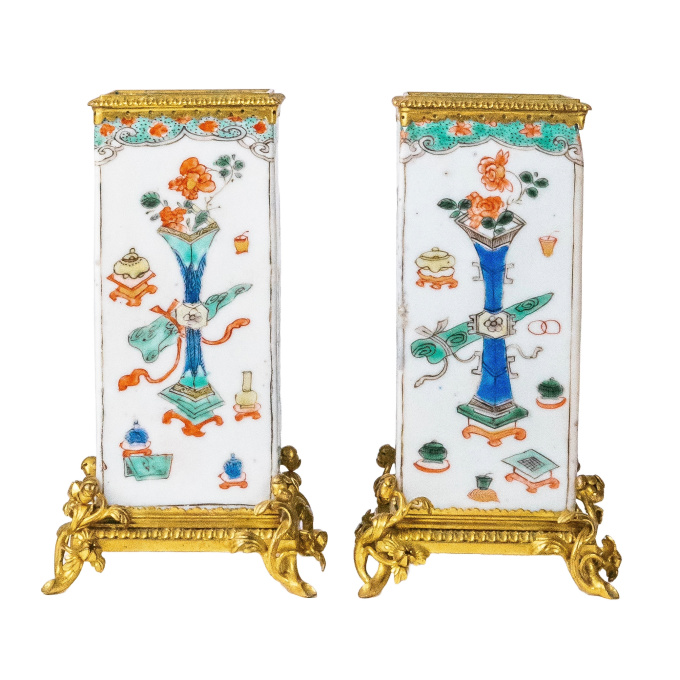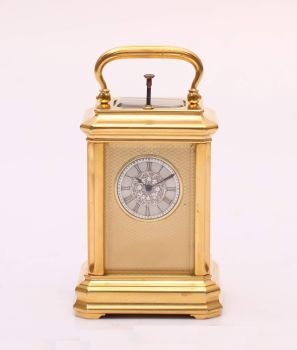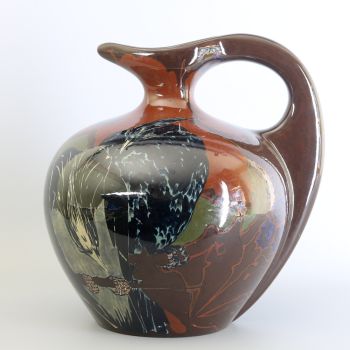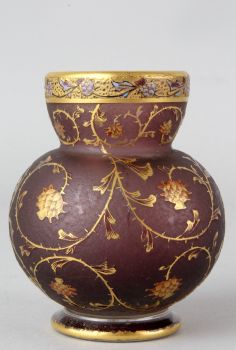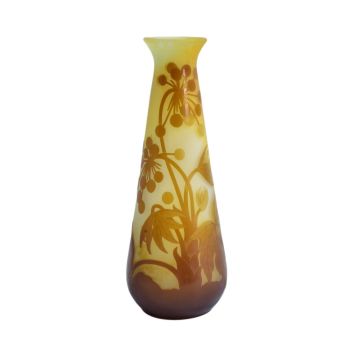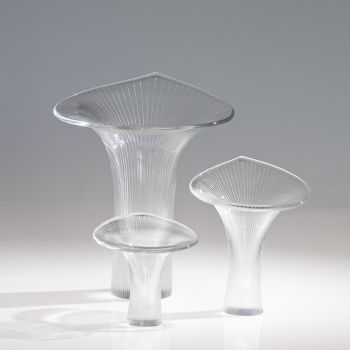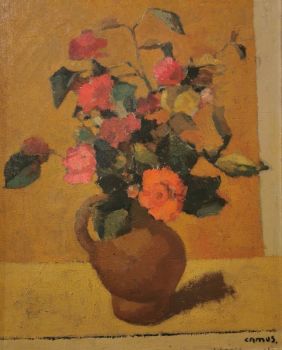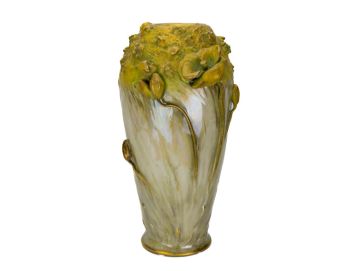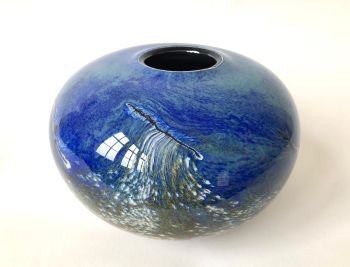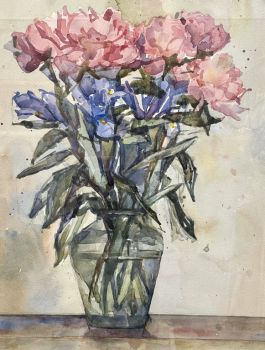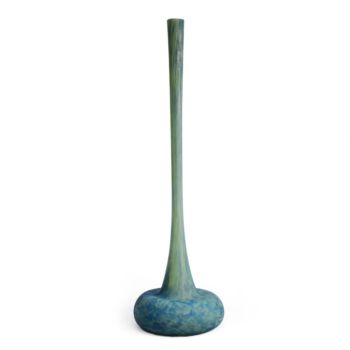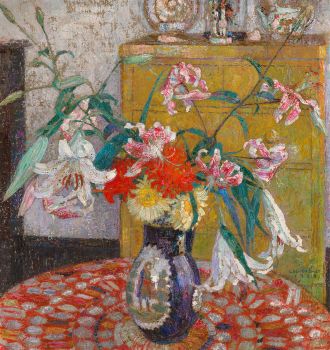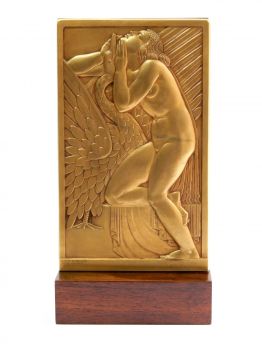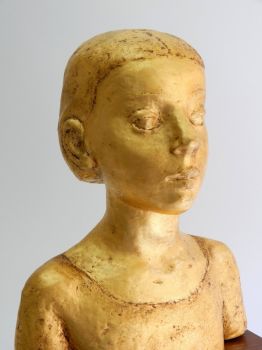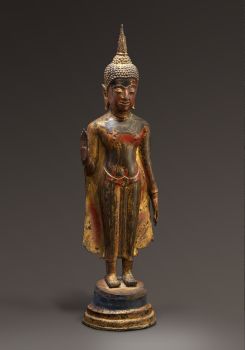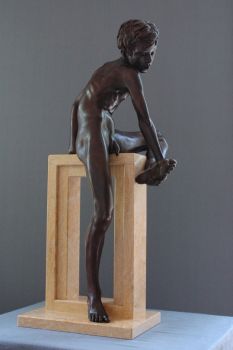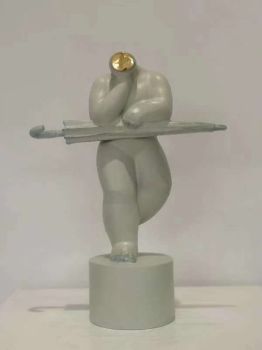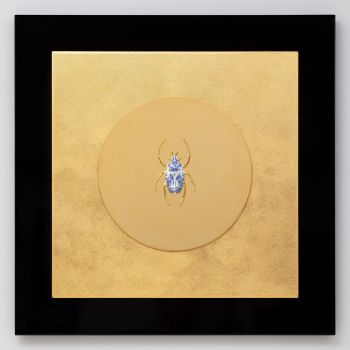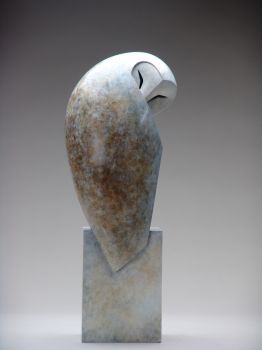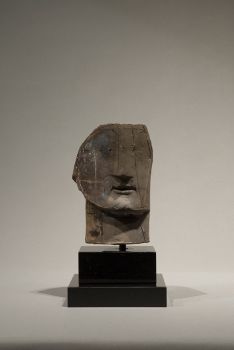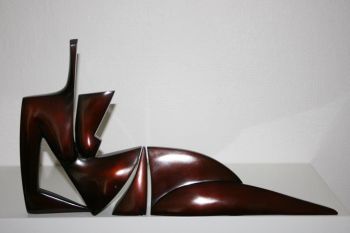A pair of famille verte vases, 18th century Kangxi 1662 - 1722
Unbekannter Künstler
Vergoldete BronzePorzellanChinesisches PorzellanMetall
17 cm
ConditionVery good
Derzeit nicht über Gallerease verfügbar
- Über KunstwerkA pair of Kangxi period (1662-1722) famille verte vases with the ‘Hundred Treasures’ decor and gilt-bronze mounts, around 1700, Jingdezhen, China.
Famille Verte
Dimensions: 16.8 cm. height.
This exceptional pair of vases has a fine decoration in famille verte style. The use of this style and colours emerged from 1670, during the Kangxi period (1662-1722). Famille verte can be characterized by the use of a combination of the colours green (predominantly), red, blue and yellow. The cobalt blue could be underglaze but it also appears overglaze as the other colours.
On two sides of both vases the ‘Hundred Treasures’ (or the ‘Hundred Antiques’, baigu 百古) are shown. This is a term used for a collection of Chinese symbols or symbolical items that often are depicted in Chinese art. It comprises precious objects, scholar objects and symbols, often referring to the four Chinese ancient arts. The Hundred Treasures are not specifically defined but they comprise specific sets called the ‘Eight Treasures’ (babao 八宝) and the ‘Four Treasures’.
On one side, we can see a resplendent vase with peonies in it, surrounded by treasures. On the opposite side, a beautifully detailed vase as well is shown in the middle, with peacock feathers and blood coral in it. The peacock feathers represent an official rank. The coral stands for longevity. This is very expectational and rich decoration. Also on this side the vase is surrounded by the Hundred Treasures including precious porcelain objects. The other two sides show a natural landscape with rocks overgrown by plants and flowers. Around the flowers, butterflies are flying. The vases are finished with fine gilt-bronze mounts to the top and bottom. The bottom mounts each have four elegant feet surrounded by moulded roses. The insides have bronze compartments as well. These compartments can be lashed out and could be used to add water to the vase without damaging the porcelain paste. The bronze mounts are crafted in Europe (France), in the 19th century.
Condition: good, some small fritting to the side. - Über Künstler
Es kann vorkommen, dass ein Künstler oder Hersteller unbekannt ist.
Bei einigen Werken ist nicht zu bestimmen, von wem sie hergestellt wurden, oder sie wurden von (einer Gruppe von) Handwerkern hergestellt. Beispiele sind Statuen aus der Antike, Möbel, Spiegel oder Signaturen, die nicht klar oder lesbar sind, aber auch einige Werke sind überhaupt nicht signiert.
Außerdem finden Sie folgende Beschreibung:
•"Zugeschrieben …." Ihrer Meinung nach wohl zumindest teilweise ein Werk des Künstlers
•„Atelier von ….“ oder „Werkstatt von“ Ihrer Meinung nach eine Arbeit, die im Atelier oder in der Werkstatt des Künstlers, möglicherweise unter seiner Aufsicht, ausgeführt wurde
•„Kreis von ….“ Ihrer Meinung nach ein Werk aus der Zeit des Künstlers, das seinen Einfluss zeigt, eng mit dem Künstler verbunden, aber nicht unbedingt sein Schüler
•"Art von …." oder „Anhänger von ….“ Ihrer Meinung nach eine Arbeit, die im Stil des Künstlers ausgeführt wurde, aber nicht unbedingt von einem Schüler; kann zeitgenössisch oder fast zeitgenössisch sein
•„Art von ….“ Ihrer Meinung nach ein Werk im Stil des Künstlers, aber späteren Datums
•"Nach …." Ihrer Meinung nach eine Kopie (jegliches Datums) eines Werks des Künstlers
• „Unterzeichnet …“, „Datiert …“. oder „Beschriftet“ Ihrer Meinung nach wurde das Werk vom Künstler signiert/datiert/beschriftet. Das Hinzufügen eines Fragezeichens weist auf einen Zweifel hin
• „Mit Unterschrift …“, „Mit Datum …“, „Mit Aufschrift ….“ oder „Trägt Unterschrift/Datum/Beschriftung“ ihrer Meinung nach die Unterschrift/Datum/Beschriftung von jemand anderem als dem Künstler hinzugefügt wurde
Artwork details
Related artworks
- 1 - 4 / 12
Unbekannter Künstler
Series of 6 Chinese cups and saucers (Yongzheng period)1722 - 1735
Preis auf AnfrageKuipers Kunst & Antiek
1 - 4 / 12Gyrinus
Punktiertes graviertes Glas mit Putten1764 - 1766
Preis auf AnfragePeter Korf de Gidts - Antiquairs
1 - 4 / 24Johann Loetz (Lötz) Witwe Klostermühle
Johann Loetz Witwe – Jugendstil Cobalt Papillon vaas1900 - 1910
Preis auf AnfrageAntiques Emporium
Gabriel Argy-Rousseau
Gabriël Argy-Rousseau – Crabes et Algues vase – 19201920 - 1929
Preis auf AnfrageAntiques Emporium
1 - 4 / 24Unbekannter Künstler
Series of 6 Chinese cups and saucers (Yongzheng period)1722 - 1735
Preis auf AnfrageKuipers Kunst & Antiek
Samuel Dejong
Anatomia Blue heritage II Goliath Beetle closed BGG2019
Preis auf AnfrageVilla del Arte Galleries
1 - 4 / 24

